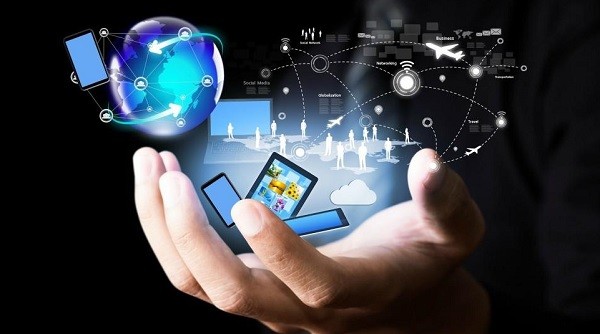The Next Generation of Wireless Communication: What Comes After 5G?
The future of wireless communication beyond 5G is a topic of great interest and speculation in the tech world. As we move towards the next generation of connectivity, a new era is emerging with promising technologies like 6G, terahertz communication, and satellite networks.
These advancements aim to revolutionize various industries by offering faster speeds, ultra-low latency, massive connectivity, and innovative applications. With 6G on the horizon, which is expected to provide unprecedented capabilities, such as holographic communication and seamless integration with artificial intelligence, the future of wireless communication holds immense potential for transformative changes in how we live, work, and connect.
We will delve into the exciting possibilities and breakthroughs that lie beyond the realm of 5G.
The Evolution Of Wireless Communication

The evolution of wireless communication has reached new heights with the advent of 5G technology. As we look ahead, the next generation of wireless communication promises even faster speeds, lower latency, and greater connectivity. Innovations such as advanced beamforming, terahertz frequencies, and quantum communication are paving the way for what comes after 5G.
Wireless communication has seen remarkable advancements over the years. Let’s explore the journey from 1G to 5G and the challenges faced by the latest generation of wireless technology.
From 1G To 5G
1G introduced analog technology for voice calls. 2G brought digital signals and messaging services. 3G-enabled internet access on mobile devices. 4G improved data speeds significantly. And now, 5G offers ultra-fast connectivity and low latency.
Challenges And Limitations Of 5G
5G deployment faces obstacles like coverage issues and infrastructure requirements. Security concerns are critical due to the vast network-connected devices. Additionally, regulatory challenges and spectrum availability pose limitations to the 5G expansion.
Emerging Technologies
As we continue to push the boundaries of wireless communication, new technologies are constantly emerging, shaping the future of our connected world. These emerging technologies are poised to revolutionize the way we communicate, making our lives more efficient, convenient, and interconnected than ever before.
6G And Beyond
Just as we are starting to experience the lightning-fast speeds and low latency of 5G, the next generation of wireless communication is already in the works. Meet 6G, the technology that promises to take everything we love about 5G and push it to the next level. With speeds that could reach terabits per second and near-instantaneous communication, 6G aims to open up a world of possibilities yet unseen in our current wireless networks.
But what lies beyond 6G? The future of wireless communication holds untold potential. Machine learning, artificial intelligence, and quantum computing are just a few of the emerging technologies that could shape the wireless landscape in the coming years.
Internet Of Things (IoT) And Edge Computing
The Internet of Things (IoT) is no longer a futuristic concept. It is an increasingly integral part of our lives, connecting everything from our smartphones and wearables to our houses and cars. With the advent of 5G, the potential of the IoT has exploded, allowing for more devices to be connected and for data to be transmitted faster than ever before.
But with the growing number of connected devices comes the need for efficient and decentralized computing power. This is where edge computing comes in. By moving data processing closer to the source of the data, edge computing reduces latency and improves real-time responsiveness, making it a perfect fit for the IoT. Combined with the speed and capacity of 5G, these technologies have the potential to transform industries ranging from healthcare and transportation to manufacturing and agriculture.
The world of wireless communication is constantly evolving, with emerging technologies like 6G and IoT shaping the way we connect and interact with each other and the world around us. As these technologies continue to develop and mature, we can expect to see a future where the boundaries of connectivity are pushed ever further, enabling new possibilities and opportunities for innovation.
Impact On Industries And Society
The next generation of wireless communication is poised to revolutionize various industries and society as a whole. With advancements beyond 5G, the new technology promises faster data transfer, improved connectivity, and enhanced capabilities for IoT and interconnected devices, offering myriad possibilities for innovation and progress.
Revolutionizing Healthcare
The next generation of wireless communication, which will follow 5G, is set to have a profound impact on industries and society as a whole. One industry that stands to benefit greatly from this new era of connectivity is healthcare.
With lightning-fast internet speeds and ultra-low latency, the possibilities for healthcare providers are endless. Telemedicine, for example, will become even more accessible and efficient, allowing patients to consult with doctors and specialists from the comfort of their own homes. This will not only save time and money but also enable individuals in remote areas to receive specialized care that may not have been available to them otherwise.
Real-time monitoring of patients will become more seamless and accurate, leading to early detection and prevention of diseases. This will result in improved health outcomes and reduced healthcare costs. Additionally, the Internet of Things (IoT) will play a pivotal role in remote patient monitoring, wearable devices, and even smart pills that can transmit valuable data to healthcare professionals in real time.
Transforming Transportation And Smart Cities
Another industry that will be revolutionized by the next generation of wireless communication is transportation. Connected vehicles, enabled by ultra-reliable and low-latency communication networks, will lead to safer roads, reduced traffic congestion, and increased energy efficiency. Self-driving cars will become more prevalent, transforming the way we commute and travel.
Smart cities will also greatly benefit from the advancements in wireless communication. Sensor networks will allow for more efficient management of resources such as electricity, water, and waste. City infrastructure will become more intelligent and responsive, leading to improved quality of life for citizens. Traffic management systems will be more effective, reducing travel times and carbon emissions.
Furthermore, the next generation of wireless communication will enable enhanced public safety and security measures in smart cities. Surveillance cameras, emergency response systems, and public transportation networks will be seamlessly connected, allowing for quicker response times and better coordination in emergencies.
Regulatory And Security Considerations
The future of wireless communication beyond 5G brings important regulatory and security considerations.
Ensuring Privacy And Data Protection
Privacy and data protection are crucial for secure wireless connectivity.
Policy And Governance
Policy and governance frameworks must evolve alongside technology advancements.
Frequently Asked Questions
What Is The Future Of Wireless Communication?
The future of wireless communication lies in advanced technologies such as 6G and beyond, promising faster speeds and lower latency.
How Will 6G Technology Benefit Consumers?
6G technology will bring enhanced virtual and augmented reality experiences, ultra-high definition video streaming, and seamless IoT connectivity.
Will 6G Technology Replace 5g Entirely?
While 6G is expected to complement and build upon 5G, it is not likely to replace it entirely, but rather work alongside it to enhance connectivity.
What Are The Potential Challenges Of 6G Implementation?
Potential challenges of 6G include the development of new infrastructure, security concerns, and ensuring global standardization for seamless integration.
When Can We Expect The Commercial Launch Of 6G?
Commercial launch of 6G technology is projected for the late 2020s or early 2030s, with ongoing research and development paving the way for its arrival.
Conclusion
As technology advances, the future of wireless communication beyond 5G holds vast potential. From faster speeds to heightened connectivity, innovations are poised to revolutionize how we connect. Embracing these advancements promises an exciting era of seamless communication and groundbreaking possibilities on the horizon.
Stay tuned for what’s next!

